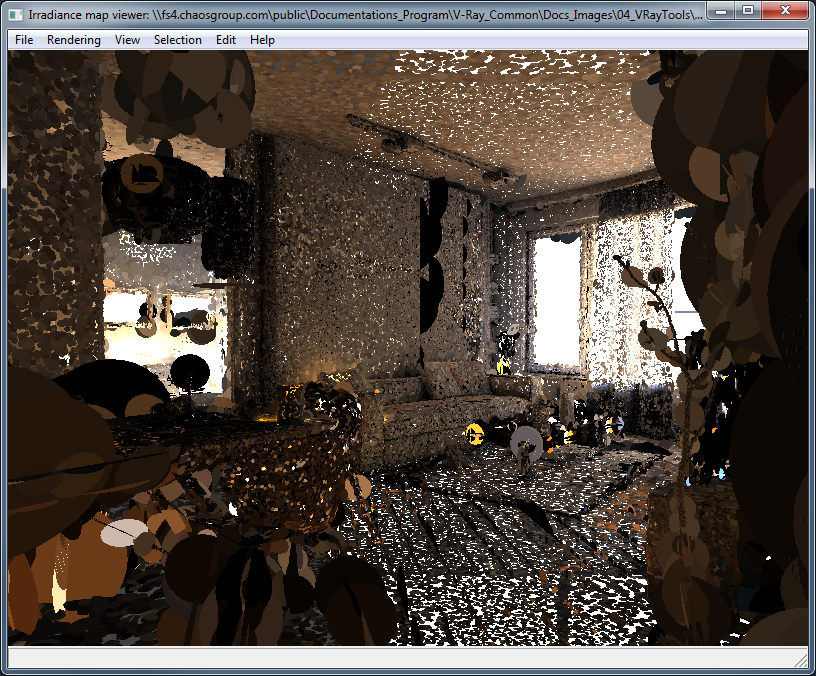Irradiance Map Viewer
The Irradiance map viewer can be used to view, merge and save light map files created by V-Ray. It works with Irradiance maps and Light Cache maps.
Overview
The Irradiance Map viewer tool allows you to navigate around a 3d projected version of a scene to view where GI samples were taken during the rendering process.
Note:The viewer is a separate program and does not require the V-Ray host application (3ds Max, Maya, MODO, etc.) to be running.

Installation
The Irradiance Map viewer tool is installed along with V-Ray for 3ds Max and can be found through Start Menu > Programs > V-Ray for 3ds Max > Tools > Irradiance Map viewer.
Start the imapviewer executable from C:\Program Files\Chaos Group\V-Ray for 3ds max\bin\
Usage
There are several methods of running the irradiance map viewer, which are outlined below.
The simplest way is to double-click the imapviewer.exe file. This will bring up an Open File dialog box that lets you browse for a light map to open. This is the same as starting the irradiance map viewer from the Start Menu. The menus of the program allow you to do various things with the light map (merging and saving etc).
You can also run the irradiance map viewer from the command line. In this case there are several possible choices:
If you type just
> imapviewer
on the command line, this is the same as double-clicking the file. It will bring up the File Open dialogue for selecting an irradiance map or a light cache map file.
You can also type
> imapviewer <filename>
where <filename> is the name of an irradiance map or a light cache map file. This file will be opened automatically.
A third way is to use the viewer to merge several maps into one:
> imapviewer -load <map1> -load <map2> ... [-save<finalmap>] [-nodisplay]
This will load the specified maps and combine them into one light map of the same type. If the -save option is specified, the result will be written to the given file. If the -nodisplay option is specified, the resulting map will not be displayed (otherwise the viewer will display the final result).
Notes
-
Use the -help option on the command line to see a short description of the usage of the irradiance map viewer